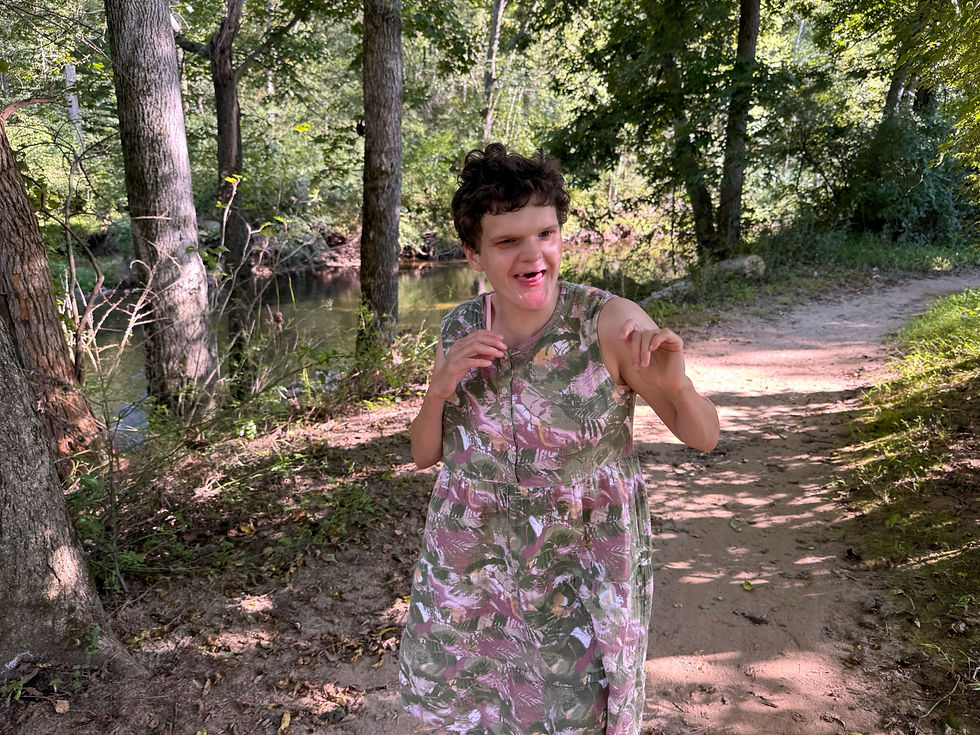Chester County Outdoor Access Guide launched at state conference
- pjdoehring
- Apr 5
- 3 min read
Updated: Apr 7
Suggested goals to increase health and happiness, a first set of maps, and a preliminary analysis of potential gaps in Chester County parks, paths, and preserves illustrates the potential to help improve the quality of life for people with disabilities.
As captured in previous posts, Kennett Outdoors has been working to help people with disabilities connect with the outdoors in ways that improve their health and well-being. So we were excited to share several important steps forward in these efforts, through a presentation with Sarah Walter of PennTrails at the 2025 WeConservePA Land Conservation conference at State College (available here or by clicking on the picture below).
The most significant step forward is the development of an initial set of layered, interactive maps that are the key to the guide. Once someone with a disability has decided what kind of experience they are seeking, and they identify the features that represent barriers to those experiences, they can use these maps to search for the facilities that are likely to support the kind of experience they seek (learn more here). This first set of maps focuses on one set of goals: Getting Fit on paths at least 1 mile long. When zoomed out, users who click on a specific location access a pop-up with more information (and links) about a specific park, preserve, or path. When users zoom in and click on a specific location, they can see a list of the specific, accessible features. When users zoom in further still, they can see the location of these features and the route of the paths, and can click on each to access more detailed information.

Another significant step forward is the demonstration of a model for documenting gaps in access, using the data gathered thus far. Using the data collected about accessible features to generate maps that aligned with different types of experiences, we can identify areas of Chester County where residents with disabilities may lack reasonable access to facilities that meet a specific goal. In the example to the right, you can see gaps in the county for someone seeking to Get Fit on paths at least 1 mile long in partially shaded paths that support year-round use within a 15 minute drive located at sites with accessible restrooms. The sections of the county without reasonable access are those outside of the circles representing a 6 mile radius from a facility meeting these characteristics- a reasonable driving distance for those seeking to get fit by walking these paths 2-3 times weekly.
We hope that this is just be the first step, and we are excited to imagine others: (a) completing our site surveys of the facilities with paths at least one mile long; (b) beginning a survey of the paths themselves (to confirm the available shade, more precisely locate points of interest, to find benches, etc.); (c) repeating this process for shorter paths, and for natural trails that approach Universal Access standards... and so on! Some of these will depend on whether we can identify partners to help with this work: for example, managers of the parks, paths, and preserves listed here who can provide up-to-date information about their facilities, and consider this model when setting priorities for future development. In the meantime, we are starting to work on new pages at Kennett Outdoors, capturing what we call the Outdoors for All initiatives. For now, these just bundle the Outdoor Access Guide and the Fresh Air Self Care FOR ALL Training guide (we will be updating the latter with the new goals for health and happiness presented here). .
es-










Comments